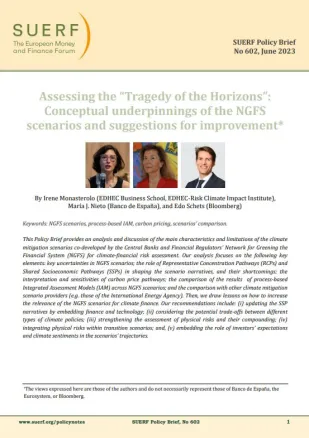
Assessing the “Tragedy of the Horizons”: Conceptual underpinnings of the NGFS scenarios and suggestions for improvement
This Policy Brief assesses the strengths and limitations of the climate mitigation scenarios developed by the Network for Greening the Financial System (NGFS) for climate-financial risk analysis. It highlights key uncertainties, model sensitivities, and gaps in current narratives, and compares NGFS results with other scenario providers. The Brief concludes with recommendations to improve relevance for climate finance, including updating socioeconomic pathways, integrating policy trade-offs, strengthening physical risk assessment, and reflecting investor expectations.
